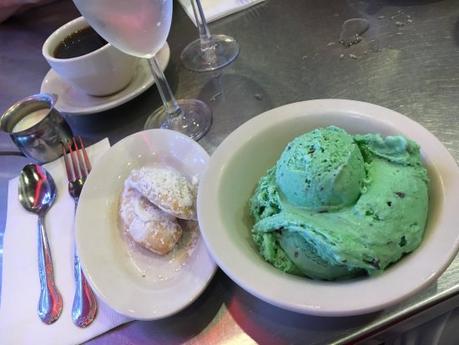 The first gelato cart appeared between the years of 1920 and 1930 in the northern Italian city of Varese. Legend regarding the actual incarnation of ice cream is vague, though history suggests the idea of ice cream started in Sicily, ancient Rome, and Egypt when frozen snow was preserved underground and flavored. A man by the name of Francsco Procopiio dei Coltelli made the first usable ice cream machine in 1686.
The first gelato cart appeared between the years of 1920 and 1930 in the northern Italian city of Varese. Legend regarding the actual incarnation of ice cream is vague, though history suggests the idea of ice cream started in Sicily, ancient Rome, and Egypt when frozen snow was preserved underground and flavored. A man by the name of Francsco Procopiio dei Coltelli made the first usable ice cream machine in 1686.
To all of these innovators of gelato, I thank you.
I’m not sure my life would be the same without gelato in it.
Gelato means ice cream, and it starts out with the same custard base, but it has a higher proportion of milk than cream and eggs (and sometimes has no eggs at all). When making gelato, it is churned at a much slower rate than ice cream, incorporating less air, which makes the gelato denser than ice cream. And, as an added bonus, gelato has less fat than ice cream.
As you have probably noticed in your local grocery store, sales of gelato are on the rise. In fact, Americans are loving and consuming gelato right now at a record pace. Sales were up 32 percent last year, and the selection of gelato has increased.

With warmer weather comes our increased desire for gelato of all flavors. If you live in Maryland or plan to visit soon, be sure to visit Vaccaro’s in Little Italy in Baltimore for some of the best gelato around. Or, if you’re content to bring some home from your local grocer, I highly recommend the Talenti brand, especially the Sea Salt Caramel and Mint Chocolate Chip varieties.

If I had my druthers and an airline ticket, I’d venture to the place of gelato’s birth. Some of the best gelato I ever had was in Rome at Giolitti.
You won’t be disappointed.




